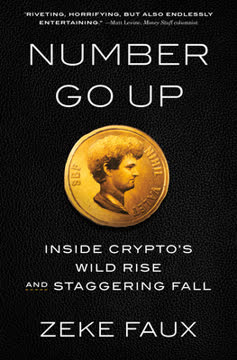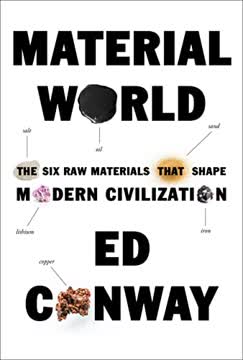가지 주요 요점
1. 반도체 산업이 세계 권력 구도를 형성하다
"반도체는 세계화의 지리적 구도를 형성하며 아시아와 미국을 떼려야 뗄 수 없는 관계로 엮었다."
지정학적 영향력. 반도체 산업은 단순한 경제적 요소를 넘어 세계 권력 구도를 결정짓는 핵심 요인으로 자리 잡았다. 이는 국가 안보, 기술 발전, 국제 관계에까지 깊은 영향을 미친다.
경제적 파급력. 반도체 산업의 글로벌 가치 사슬은 수조 달러에 이르는 무역을 포함하며, 스마트폰부터 첨단 무기 체계에 이르기까지 모든 분야에 필수적인 부품을 공급한다. 산업의 각 분야를 장악한 국가는 막대한 경제적·기술적 힘을 행사한다.
전략적 중요성. 반도체 기술과 제조를 통제하는 것은 국가의 군사력, 경제 경쟁력, 기술 독립성에 결정적인 자산이 되었다. 특히 동아시아에 산업이 집중되면서 새로운 지정학적 긴장과 상호 의존성이 생겨났다.
2. 진공관에서 집적회로까지: 실리콘밸리의 탄생
"집적회로의 발명은 전자공학뿐 아니라 혁신의 지리적 구도까지 바꾸어 놓았다."
기술 혁명. 진공관에서 집적회로로의 전환은 기술사에서 중대한 전환점이었다. 이 변화는 전자기기의 소형화를 가능케 하여 디지털 혁명의 길을 열었다.
실리콘밸리의 부상. 집적회로 개발은 실리콘밸리를 세계 기술 혁신의 중심지로 만들었다. 윌리엄 쇼클리, 로버트 노이스, 고든 무어 같은 인물들이 이 변혁에 핵심 역할을 했다.
- 쇼클리 반도체 연구소: 1956년 설립, 최고의 인재들을 끌어모음
- 페어차일드 반도체: 1957년 ‘배신자 8인’에 의해 설립
- 인텔: 1968년 노이스와 무어가 설립, 반도체 거인으로 성장
혁신 생태계. 실리콘밸리는 학계, 벤처 자본, 기업가 정신이 독특하게 결합된 혁신 생태계를 구축해 수십 년간 반도체 발전의 토대를 마련했다.
3. 냉전이 반도체 혁신과 글로벌 공급망을 이끌다
"미국의 전략은 일본을 ‘전자제품 판매원’으로 만들고 경쟁자로 만들지 않는 것이었다."
군사적 응용. 냉전은 반도체 기술에 막대한 투자를 촉진했으며, 미국과 소련 모두 군사적 활용 가능성을 인식했다. 이 경쟁은 칩 설계와 제조의 급속한 발전을 이끌었다.
글로벌 공급망. 미국은 기술 우위를 유지하기 위해 동맹국, 특히 동아시아 국가들의 반도체 산업 발전을 장려했다. 이 전략은 오늘날까지 이어지는 복잡한 글로벌 공급망을 형성했다.
- 일본: 소비자 전자제품 개발 장려
- 한국: 메모리 칩 생산 지원
- 대만: 핵심 제조 허브로 육성
예기치 않은 결과. 이 전략은 소련의 기술 진보를 억제하는 데 성공했지만, 동맹국들이 자체 산업을 강화하면서 미국 반도체 지배력에 도전하는 기반을 마련했다.
4. 일본 반도체 산업의 부상과 몰락
"일본의 반도체 기업들은 실리콘밸리와 경쟁한 것이 아니라 압도했다."
급속한 성장. 1980년대 일본 반도체 산업은 메모리 칩 생산에서 세계를 지배하는 급성장을 이루었다. 정부 지원, 효율적인 제조 공정, 품질 중심 전략이 성공의 밑바탕이었다.
시장 지배력. 1980년대 후반 NEC, 도시바, 히타치 같은 일본 기업들은 특히 DRAM 분야에서 세계 반도체 시장의 상당 부분을 장악했다.
결국 쇠퇴. 그러나 일본의 지배력은 오래가지 못했다. 쇠퇴의 원인은 다음과 같다.
- DRAM 생산에 과도한 투자
- 마이크로프로세서로의 전환 실패
- 한국과 대만 경쟁자의 부상
- 미국의 무역 압력과 반도체 무역 협정
5. 대만, 반도체 제조의 핵심 플레이어로 부상하다
"대만 반도체 제조 회사(TSMC)는 대부분 사람들이 모르는 세계에서 가장 중요한 기업이 되었다."
파운드리 모델 혁신. 1987년 모리스 창이 설립한 TSMC는 ‘순수 파운드리’ 모델을 개척해, 다른 회사가 설계한 칩을 제조하는 데 집중했다. 이 모델은 반도체 산업에 혁명을 일으켰다.
글로벌 지배력. TSMC는 첨단 칩 제조 분야에서 세계 선두 기업으로 자리매김했다. 기술력과 규모는 글로벌 기술 생태계에서 필수적인 역할을 한다.
지정학적 함의. 대만의 반도체 중심 역할은 다음과 같은 지정학적 의미를 갖는다.
- 중국의 잠재적 공격에 대한 ‘실리콘 방패’ 역할
- 공급망 취약성에 대한 우려 증대
- 미중 기술 경쟁의 핵심 지점
6. 중국의 반도체 독립 추진, 미국 지배력에 위협
"시진핑은 ‘핵심 기술에서 조속한 돌파구를 마련하라’고 촉구했다."
전략적 우선순위. 중국은 반도체 독립을 국가적 최우선 과제로 삼고, 외국 칩 의존을 전략적 약점으로 인식한다. 이는 글로벌 기술 강국이 되기 위한 광범위한 노력의 일환이다.
대규모 투자. 중국 정부는 수천억 달러를 투입해 국내 반도체 산업을 육성하고 있다.
- 국가 투자 기금 설립
- 칩 기업에 대한 보조금 지원
- 외국 기술 이전 장려
세계적 파장. 중국의 반도체 야망은 다음과 같은 광범위한 영향을 미친다.
- 미국과의 기술 경쟁 심화
- 기존 글로벌 공급망 교란
- 첨단 칩의 군사적 활용 가능성에 대한 우려
7. 미래 전쟁: AI와 첨단 칩이 새로운 전장이 되다
"AI를 선도하는 국가가 세계를 지배할 것이다."
AI 기반 전쟁. 첨단 반도체는 군사 분야에서 인공지능 시스템 개발과 운용에 필수적이다. 자율 무기, 고급 타격 시스템, 실시간 전장 분석 등이 포함된다.
연산력 경쟁. 방대한 데이터를 신속히 처리하는 능력이 군사 우위의 핵심 요소가 되면서, AI 전용 고성능 칩 개발 경쟁이 치열해지고 있다.
이중 용도 기술. 많은 첨단 반도체는 민간과 군사 양쪽에 모두 사용되며, 상업 기술과 방위 기술의 경계를 모호하게 만든다. 이는 민감 기술 확산 통제와 수출 규제에 새로운 도전을 제기한다.
8. 미국 정책 변화: ‘더 빨리 달리기’에서 기술 봉쇄로
"‘더 빨리 달리기’만으로는 부족하다. 그들을 늦추는 것도 필요하다."
정책 진화. 미국 반도체 정책은 기술 우위 유지에만 집중하던 과거에서 벗어나, 중국의 기술 진보를 적극적으로 억제하는 방향으로 전환되었다.
수출 통제. 미국은 첨단 반도체 기술에 대한 수출 규제를 강화해 중국의 최첨단 칩과 제조 장비 접근을 제한하고 있다.
국내 투자. 반도체의 전략적 중요성을 인식한 미국 정부는 국내 칩 제조와 연구에 대한 투자를 확대하고 있다.
- CHIPS 법안: 미국 칩 생산에 수십억 달러 보조금 지원
- 국가 반도체 기술 센터: 칩 혁신 가속화 목표
9. 글로벌 칩 부족 사태가 드러낸 공급망 취약성
"칩 부족은 반도체 공급망이 얼마나 취약하고 특정 지역에 집중되어 있는지를 드러냈다."
공급망 붕괴. 2020~2021년 전 세계 칩 부족은 자동차부터 소비자 전자제품에 이르기까지 산업 전반에 영향을 미치며 공급망의 취약성을 노출시켰다.
집중 위험. 칩 생산이 대만과 한국 등 몇몇 지역에 집중된 위험이 드러나면서 제조 지역 다변화 요구가 커졌다.
정책 대응. 전 세계 정부와 기업은 다음과 같은 대응에 나섰다.
- 국내 칩 생산 투자 확대
- 공급망 다변화 추진
- 재고 및 조달 전략 재검토
마지막 업데이트 날짜:
FAQ
1. What is "Chip War: The Fight for the World's Most Critical Technology" by Chris Miller about?
- History of Semiconductors: The book traces the invention, development, and global spread of semiconductor technology, focusing on how chips became the foundation of modern life, economies, and military power.
- Geopolitical Competition: It explores the intense international competition—especially between the US, China, Japan, Taiwan, and the Soviet Union—to control chip design, manufacturing, and supply chains.
- Key Players and Companies: The narrative highlights the roles of major companies (like Intel, TSMC, Samsung, and ASML) and influential individuals (such as Morris Chang, Andy Grove, and Akio Morita).
- Modern Implications: The book connects historical developments to current events, showing how chip shortages, trade wars, and national security concerns shape today’s world.
2. Why should I read "Chip War" by Chris Miller?
- Understand Global Power Shifts: The book explains how control over semiconductors underpins economic and military power, making it essential for understanding 21st-century geopolitics.
- Insight into Technology’s Role: It reveals how chips are embedded in everything from smartphones to missiles, and why their production is so complex and concentrated.
- Lessons from History: By examining past successes and failures in the chip industry, readers gain perspective on current supply chain vulnerabilities and future risks.
- Engaging Storytelling: Chris Miller combines technical clarity with compelling stories of innovation, espionage, and corporate rivalry, making the book accessible and gripping.
3. What are the key takeaways from "Chip War" by Chris Miller?
- Semiconductors as Strategic Assets: Chips are not just commercial products—they are strategic resources that shape national security, economic growth, and technological leadership.
- Global Supply Chain Fragility: The highly specialized and geographically concentrated chip supply chain is both a marvel of efficiency and a source of vulnerability.
- Innovation and Industrial Policy: Government support, talent migration, and corporate strategy have all played crucial roles in determining which countries and companies lead in semiconductors.
- The New Cold War: The US-China rivalry over chips is a defining feature of modern geopolitics, with export controls, subsidies, and technological decoupling reshaping the industry.
4. How did the semiconductor industry originate and evolve, according to "Chip War"?
- Post-WWII Innovation: The industry began with the invention of the transistor at Bell Labs, followed by the integrated circuit, driven by military and space race needs.
- Rise of Silicon Valley: Key figures like William Shockley, Robert Noyce, and Gordon Moore established the culture and business models that made Silicon Valley the global center for chip innovation.
- Globalization of Manufacturing: As costs rose, companies moved assembly and manufacturing to Asia, especially Taiwan, South Korea, and Japan, creating today’s global supply chain.
- Government and Military Influence: US government funding and procurement, especially for defense, were critical in the early decades, while later, Asian governments used industrial policy to catch up.
5. What is the significance of Taiwan and TSMC in the global chip industry, as described in "Chip War"?
- TSMC’s Founding and Model: Morris Chang founded TSMC in Taiwan, pioneering the “foundry” model—manufacturing chips designed by other companies—which revolutionized the industry.
- Concentration of Advanced Manufacturing: TSMC now produces the vast majority of the world’s most advanced chips, making Taiwan a critical node in the global supply chain.
- Geopolitical Vulnerability: The book highlights how Taiwan’s centrality creates both economic power and strategic risk, especially given tensions with China.
- “Silicon Shield” Concept: Taiwan’s chip industry is seen as a deterrent against conflict, as its destruction would disrupt the global economy.
6. How does "Chip War" explain the US-China rivalry over semiconductors?
- China’s Ambitions: China has invested heavily in building its own chip industry, aiming for self-sufficiency and global leadership, as outlined in policies like “Made in China 2025.”
- US Export Controls: The US has responded with export restrictions on advanced chips and manufacturing equipment, targeting companies like Huawei and SMIC to slow China’s progress.
- Technology Transfer and Espionage: The book details cases of technology transfer, joint ventures, and alleged intellectual property theft as China seeks to close the gap.
- Strategic Stakes: The rivalry is about more than commerce—it’s about military power, economic independence, and the future of global technology standards.
7. What are the main technological and supply chain bottlenecks ("chokepoints") in the chip industry, according to "Chip War"?
- Extreme Concentration: Key stages—like advanced chip manufacturing (TSMC, Samsung), lithography equipment (ASML), and design software (US firms)—are dominated by a handful of companies.
- Export Controls as Leverage: The US and its allies can restrict access to critical tools and software, effectively “choking” rivals’ ability to produce leading-edge chips.
- Vulnerability to Disruption: Natural disasters, pandemics, or conflict in Taiwan could halt global chip production, affecting everything from cars to defense systems.
- Difficulty of Replication: Building new fabs or duplicating advanced equipment takes years and massive investment, making these chokepoints persistent.
8. How did Japan, South Korea, and Europe fit into the semiconductor story in "Chip War"?
- Japan’s Rise and Fall: Japan became a chip powerhouse in the 1980s through government support and manufacturing excellence, but later lost ground to the US and South Korea due to market shifts and strategic missteps.
- South Korea’s Success: Companies like Samsung and SK Hynix, with strong government backing, became global leaders in memory chips, leveraging scale and aggressive investment.
- Europe’s Niche Strengths: While Europe lost out in chip manufacturing, it remains vital in equipment (ASML) and some specialized chip markets.
- Lessons in Industrial Policy: The book contrasts different approaches to government intervention, showing both successes and failures.
9. What are the key concepts and terms explained in "Chip War" by Chris Miller?
- Moore’s Law: The observation that the number of transistors on a chip doubles roughly every two years, driving exponential growth in computing power.
- Foundry Model: A business model where companies like TSMC manufacture chips designed by others, enabling the rise of “fabless” design firms.
- Chokepoints: Critical nodes in the supply chain (e.g., advanced lithography, EDA software) where a single company or country dominates.
- Export Controls and Decoupling: Government policies to restrict technology transfer, aiming to protect national security and maintain technological advantage.
10. How does "Chip War" address the future of the semiconductor industry and potential risks?
- End of Moore’s Law?: The book discusses the slowing of Moore’s Law and the challenges of further miniaturization, requiring new materials and architectures.
- AI and Custom Chips: The rise of artificial intelligence and specialized chips (like GPUs and TPUs) is reshaping the industry and competition.
- Supply Chain Resilience: Governments and companies are investing in domestic manufacturing to reduce dependence on foreign suppliers, but this is costly and slow.
- Geopolitical Flashpoints: The risk of conflict over Taiwan, trade wars, and technological decoupling could disrupt the industry and the global economy.
11. What are some of the most important quotes from "Chip War" and what do they mean?
- “We are competing for everything.” – This quote encapsulates the book’s central thesis: the chip war is about economic, military, and technological supremacy.
- “No one wants to destroy Taiwan’s semiconductor supply chain.” – Highlights the paradox that Taiwan’s importance is both a shield and a source of risk.
- “Chips are the new oil.” – Emphasizes that semiconductors are now as strategically vital as energy resources once were.
- “Weaponized interdependence.” – Refers to how global supply chains can be used as tools of coercion or leverage in international politics.
12. What practical lessons and policy recommendations does Chris Miller offer in "Chip War"?
- Invest in R&D and Talent: Sustained innovation requires investment in research, education, and attracting global talent.
- Diversify Supply Chains: Reducing over-reliance on any single country or company is crucial for resilience.
- Balance Openness and Security: Policymakers must weigh the benefits of global collaboration against the risks of technology transfer to rivals.
- Prepare for Disruption: Governments and businesses should plan for potential shocks—whether from conflict, natural disasters, or technological shifts—to the chip supply chain.
리뷰
『칩 전쟁』은 반도체 산업의 포괄적인 역사와 지정학적 통찰, 그리고 이해하기 쉬운 문체로 많은 찬사를 받고 있다. 독자들은 반도체 기술과 그 세계적 영향에 대한 상세한 설명에 깊은 인상을 받았다. 다만, 미국 편향적인 시각과 반복되는 내용에 대한 비판도 일부 존재한다. 많은 이들이 이 책을 통해 글로벌 기술 공급망의 취약성과 대만의 전략적 중요성에 대해 새롭게 깨닫게 되었다고 말한다. 또한, 현재의 지정학적 긴장 상황과 기술, 경제, 정치가 얽혀 있는 복잡한 관계를 탐구한 점에서 높은 평가를 받고 있다.
Similar Books














